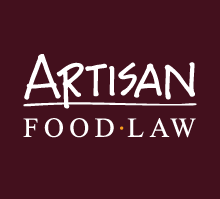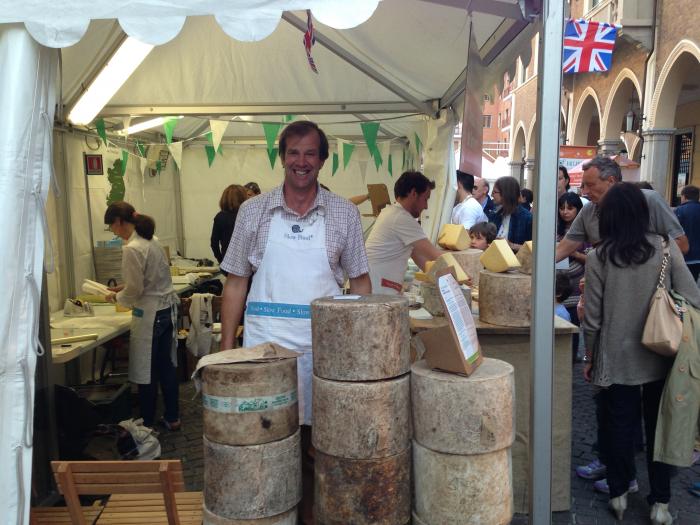‘Artisan’ and ‘natural’ defined – but is Ireland taking a step in the right direction?
Above: A true artisan cheesemaker
Early last year the Food Safety Authority of Ireland (FSAI) embarked on a consultation with a view to producing guidance that would help protect the integrity of certain marketing terms used in relation to food – notably ‘artisan’, ‘farmhouse’, ‘traditional’ and ‘natural’.
Attempts to define in any legal sense the meaning of words can be fraught with difficulty, but given there is so much evidence of the abuse of words like ‘artisan’ may be it’s worth a try.
The foundation on which the FSAI guidance rests is a provision of general food Regulation (EC) 178/2002 which states:
… the labelling, advertising and presentation of food or feed, including their shape, appearance or packaging, the packaging materials used, the manner in which they are arranged and the setting in which they are displayed, and the information which is made available about them through whatever medium, shall not mislead consumers.
A provision specifically reinforced by the food information to consumers Regulation (EU) 1160/2011 that food information shall not be misleading as to the characteristics of food and, in particular, its nature, identity, properties, composition, provenance or method of manufacture or production.
The final version of the guidance note was published earlier this monthand was produced with the assistance of a working group which included representatives from the Taste Council of Ireland and cheese maker Gubbeen. It applies to all food placed on the Irish market after December 2016, except where specific domestic or EU requirements apply, or where food is registered as an EU protected food name – PDO, PGI or TSG.
The description ‘artisan’, ‘artisanal’ or a similar term may only be applied to food which meets all four of the following criteria:
-
The food is made in limited quantities (less than 1,000 kgs or litres per week) by skilled craftspeople.
-
The method of processing is not fully mechanised and follows a traditional approach involving a proven usage for at least 30 years.
-
The food is made in a micro enterprise (0 to 9 employees) at a single location.
-
The characteristic ingredients used are grown or produced locally where seasonally available and practical.
These criteria would clearly put a brake on the excesses of Dominos artisan pizza and McDonald’s artisan chicken sandwich. On the other hand, they also draw something of an arbitrary line between what is and is not ‘artisan’ – employing 10 people or producing 1,100 kgs of food would not, for example, be ‘artisan’. This is the problem when seeking to define something which is more in the nature of a concept than a physical object susceptible to precise definition. In life there are some things which you instantly recognise, but would struggle to define. Many would no doubt opt for Lori de Mori’s description of a true culinary artisan in which food cannot be an ‘artisan’ product, but it can be made by an artisan, an important difference of emphasis.
The Food Standards Agency (FSA) shies away from an attempt at defining ‘artisan’, but devotes five pages of guidance to ‘natural’, with the starting point that:
‘Natural’ means essentially that the product is comprised of natural ingredients, e.g. ingredients produced by nature, not the work of man or interfered with by man.
A definition not a million miles away from the FSAI’s rather more succinct approach. A ‘natural’ single ingredient food, the FSAI guidance says, is “formed by nature and is not significantly interfered with by man.” Chopping, slicing, grinding, peeling, juicing, blanching, pasteurising, freezing, drying, etc. do not amount to significant interference.
Where food contains more than one ingredient, having been formed through processing, it cannot be considered ‘natural’. It may, however, be described as ‘made with natural ingredients’ where the ingredients qualify as being ‘natural’ and the food contains no additives, only natural flavourings or additives obtained from natural sources.
What’s more, the description ‘natural’ cannot be used in either case to suggest food possesses special characteristics when in fact all similar foods possess those same characteristics, which would be misleading. The description 'natural' does, however, appear more suited to a clear definition.
Finally, there is the age old problem that what the FSAI have produced is non-statutory guidance which is largely unenforceable and may end up being honoured more in the breach than the observance. It takes effect in 2017 so the jury will be out for some time to come on the question whether it will make any difference in practice. If some of the excesses of the processed food industry’s misleading ‘artisan’ claims can be curtailed it may be considered to have been a worthwhile exercise.
In practice, support for artisan food producers in reclaiming their heritage and language may have a greater, more long lasting effect. The Dominos and McDonalds of the processed food world can then simply be held up to ridicule as frauds and imposters.





